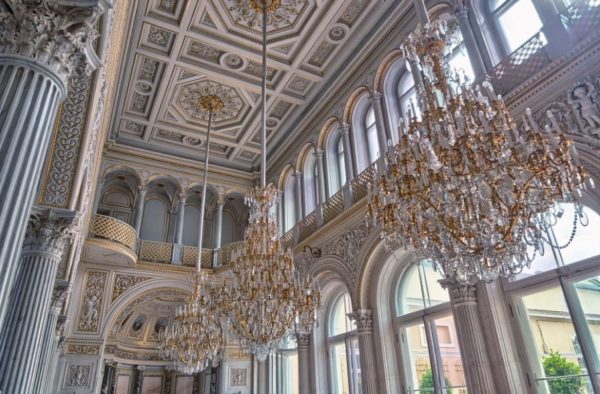This article is the first in a series in which we will study Beethoven’s First Symphony. We learn about the historical background, the style, all the cultural influences that formed this Beethoven composition. Audio clips will help us to discover each important section of this first and magnificent symphony. Let us start our journey with Beethoven symphonies!
All nine symphonies of Beethoven are remarkable, individual masterpieces! They are all different from each other, mirroring both external social and historic changes, and at the same time the internal evolution of a maturing genius composer. One can never spend enough time on studying these works, as there are always more and more layers to discover.
We start our symphonies series with Beethoven’s very first work in this genre and we do it with a good reason. This is the starting line for Beethoven, this is where he still tries to be a good student, a classic era composer, still in the shadows of Haydn and Mozart. Any future development as a composer, can be compared to this work.
Some scholars say, that for Beethoven the piano was the most intimate instrument, but also a laboratory that helped him to develop new musical ideas – like in his new symphonies. Many believe, that his symphonies are the measurements of his jumps in compositional levels, his barometer in maturing as a composer. If so, every second symphony represents the change, the revolution in his style. This gives us the I., III., V., VII. and IX. symphonies as novelties and the others as resting points or base camps for reaching ever higher mountain peaks.
Not only that, but these symphonies also serve as a mirror of history and conflict in a changing Europe. The First, somewhat restrained and aristocratic classical style, the Third, which is a plain revolutionary, the Fifth, which focuses on the individual struggle or the big Ninth, with its universal, cosmopolitan if you like, message.
|Related: The history of Beethoven’s Third Symphony (Eroica)
This symphony is clearly composed to comply with the Viennese classical style, which style has 3 major characteristics:
1. It has clear, beautiful and easy to understand melodies
2. Clear structure of composition, form and proportion
3. Good taste and artistic restraint.
The structure of a typical Viennese symphony is the following:
– movement I. – usually the most challenging intellectually, intended for the mind, tempo is fast
– movement II. – a slow movement, aiming at the heart
– movement III. – wake up call for the audience, addressing the legs, tempo is upbeat
– movement IV. – again a fast movement, giving us something to whistle on our way home.
The movements are stand-alone works, they have meaning in themselves, but a symphony with its all four movements, is always more than just the sum of its parts.
The premier of the First Symphony took place on the 2. April 1800 in Vienna and the symphony was dedicated to Gottfried van Swieten, a Dutch-born Austrian diplomat and patron of musicians. Clearly, Beethoven waited with both the string quartets and the symphonies as musical genre, since both were strictly associated with Haydn and Mozart – guys you do not want to follow if you have a faint heart…
Now, let’s focus on the music itself!
Symphony No. 1. in C major, op.21
Movement I. – Adagio molto – allegro con brio
The opening (introduction, that comes before the exposition), is dominated with wind instruments accompanied by violin plucking (pizzicato). It is adagio molto (very slow) and its style is clearly Haydnesque, although it is full with harmonic tension and ambiguity, which is definitely not common in 1800. Sounds like a French-Overture.
Right at the first bars we see, that Beethoven remains in classical style, yet made something new, right away.
The introduction continues now attended with violins. Until now the movement is very restrained.
As we arrive to the exposition and the first triad theme the tempo speeds up, new energy is released. It is allegro con brio (fast with spirit).
The second theme follows right after, which is in G major. In Beethoven’s case the second themes are usually quieter and more lyric than the firsts. If we analyze the second theme, we can see a building block idea is coming from theme 1, but in an augmented way.
Beethoven likes to start with the most simple musical motif, a small mosaic, and develop it further into a big composition. As Robert Greenberg put it once: Beethoven is building an aircraft carrier from Lego!
Following the pattern of a sonata form, we have a repeat of both the themes and then we go to the development section, which starts as this.
At the end, we arrive to the coda, which is a bit longer than usual in classical music, but as we will see Beethoven likes the coda and will extend them to extreme lengths in later works.
Keep on reading and listening to the second movement!



